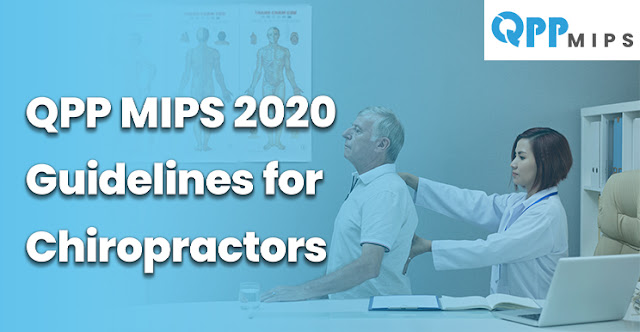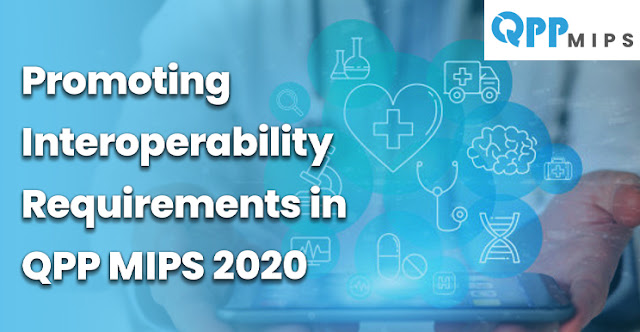
Under MACRA (Medicare Access and CHIP Reauthorization Act), clinicians can participate in either two payment models, a Merit-based Incentive Payment System (MIPS), or an Advanced Alternative Payment Model (AAPM), defined as Quality Payment Program (QPP).
In MIPs Reporting, eligible physicians are required to submit yearly data to CMS to receive a total score. There are four performance categories, Quality, Improvement Activities (IA), Promoting Interoperability (PI), and Cost, for which data is recorded and analyzed.
Today, we are discussing the Cost category and its reporting.
Let’s keep going.
Cost Performance Category
The cost category weighs 15% of the total MIPS score for the performance year 2020.
Reporting Requirements
CMS doesn’t expect any data submission for the cost category. They analyze the performance by reviewing claims data.
The following factors impact the analysis of this performance.
- Medicare Spending per Beneficiary (MSPB)
- Total per Capita Cost
- Eight episode-based cost measures
Medicare Spending per Beneficiary (MSPB)
The MSPB assessment refers to the Medicare Part A and B costs generally incurred in an episode.
An episode includes the dates falling between three days prior to an Inpatient Prospective Payment System (IPPS) hospital admission (an index admission) and 30 days post-hospital discharge. It measures the actual cost of episodes as per their expected expenditure. General Surgery Billing Services
To score for this measure, physicians or MIPS Qualified Registry on their behalf need to consider the following aspects.
Physicians, who don’t treat in-house patients don’t qualify for an episode, and no points will be awarded.
Episodes will be attributed to those clinicians, who provide the plurality of Medicare Part B services to a beneficiary during the index admission.
Physicians must report at least 35 cases to get a score for this category.
Total per Capita Cost
The total per capita cast measure analyzes all Medicare Part A and B costs for each attributed beneficiary. However, the following factors are to be considered for maximum points in MIPS.
Clinicians are supposed to be attributed to at least 20 beneficiaries.
Attribution refers to:
A beneficiary refers to a tax identification number-national provider identifier (TIN-NPI), provided if the beneficiary (patient) received primary healthcare services from primary care physicians, nurse practitioners, physician assistants, or clinical nurse specialists under the same TIN.
If the beneficiary doesn’t qualify as per the above-mentioned requirement, he/she will be attributed to the TIN-NPI, if they received services from specialist physicians within a TIN than from physicians in any other TIN.
New episode-based cost measures don’t apply to family physicians.
CMS is working on developing new episode-based measures in the future to fit diverse needs. Given below are the episode-based cost measures.
- Elective Outpatient Percutaneous Coronary Intervention
- Intracranial Hemorrhage or Cerebral Infarction
- Knee Arthroplasty
- Revascularization for Lower Extremity Chronic Critical Limb Ischemia
- Routine Cataract Removal with Intraocular Lens Implantation
- Screening/Surveillance Colonoscopy
- Simple Pneumonia with Hospitalization
- ST-Elevation Myocardial Infarction with Percutaneous Coronary Intervention
- Acute Kidney Injury Requiring New Inpatient Dialysis
- Elective Primary Hip Arthroplasty
- Femoral or Inguinal Hernia Repair
- Hemodialysis Access Creation
- Inpatient Chronic Obstructive Pulmonary Disease Exacerbation
- Lower Gastrointestinal Hemorrhage
- Lumbar Spine Fusion for Degenerative Disease, 1-3 Levels
- Lumpectomy, Partial Mastectomy, Simple Mastectomy
- Non-Emergent Coronary Artery Bypass Graft
- Psychoses/Related Conditions Renal or Ureteral Stone Surgical Treatment
It is to be noted that cost measures are risk-adjusted (based on the hierarchal condition category (HCC) risk scores) for the difference in patients’ medical conditions. For Instance, for multiple chronic conditions affecting physician’s performance.
The performance benchmarks are set based on the data collected by the CMS.
A measure will be benchmarked if it has 20 groups or individual clinicians who attribute to the measure’s minimum case.
For a fact, any measure without a benchmark cannot be scored or included in the performance category scorecard.
Eligible clinicians can be assigned up to 10 points on average of all scored cost measures concerning the performance benchmark.
For group participation in QPP MIPS, the final score will be the aggregated value of all individual scores under the TIN.
For Instance, if a clinician has 8 attributes and another has 12 attributed cases, so the group will receive a collective score as they reached the minimum threshold point 20.
If any individual or group doesn’t receive a score for this category, the weight will be redistributed to the Quality performance category.
Hey there, fellow physicians! As the healthcare landscape continues to evolve, understanding the intricacies of quality payment programs (QPP) is essential for providing optimal patient care and maintaining financial stability. In this guide, we’ll delve into the MIPS (Merit-based Incentive Payment System) Cost Category, explore how it’s managed within the finance program, and provide strategies for improving your scores. Let’s get started!
What is QPP?
The Quality Payment Program (QPP) is a comprehensive initiative by the Centers for Medicare & Medicaid Services (CMS) aimed at enhancing healthcare quality while reducing costs. Through the QPP, physicians can participate in MIPS or Advanced Alternative Payment Models (APMs). MIPS is designed to evaluate and reward healthcare providers based on their performance in various categories, including quality, improvement activities, promoting interoperability, and cost.
Overview of MIPS
MIPS combines several existing quality reporting programs into a single framework. This system allows for a more streamlined approach to measuring performance and incentivizing better care. One of the critical components of MIPS is the Cost Category, which examines how efficiently providers manage resources in delivering patient care.
Understanding the MIPS Cost Category
Definition of the Cost Category
The MIPS Cost Category evaluates the total cost of care provided to Medicare beneficiaries. It looks at how well healthcare providers manage resources while maintaining high-quality care.
Importance of the Cost Category in MIPS
Understanding the cost category is crucial for healthcare providers. It not only impacts reimbursement rates but also reflects on the overall performance of a practice. Providers who manage costs effectively can receive positive adjustments to their Medicare payments. Neurology Billing Services
How the Cost Category is Measured
The cost category is measured through various metrics, including total cost of care, Medicare spending per beneficiary, and episode-based measures. CMS uses claims data to evaluate these metrics, which means the efficiency of your practice is constantly under review.
Components of the MIPS Cost Category
Total Cost of Care
This metric assesses the overall expenses incurred for a patient’s care across a specific timeframe. The goal is to promote cost-effective treatment methods without compromising quality.
Medicare Spending per Beneficiary
This measure looks at the average costs associated with treating a Medicare beneficiary during a specified period. It takes into account all claims submitted for the beneficiary, allowing for a comprehensive view of spending patterns.
Episode-Based Measures
These measures evaluate the costs associated with specific episodes of care, such as surgeries or chronic disease management. By focusing on episodes, providers can pinpoint areas for improvement and implement cost-saving strategies.
The Role of Managed Care in MIPS
Definition of Managed Care
Managed care refers to a variety of techniques designed to reduce the cost of healthcare while improving the quality of care. This includes coordinating care among providers and utilizing preventive care to reduce unnecessary expenses.
How Managed Care Influences Costs
Managed care can significantly influence the cost category by promoting efficiency and reducing duplication of services. By managing resources effectively, healthcare providers can deliver better care while also saving money.
Benefits of Managed Care in MIPS
Implementing managed care strategies can lead to improved MIPS scores, as providers who coordinate care and focus on prevention typically see lower costs and better outcomes. It’s a win-win for both patients and providers!
Strategies for Improving MIPS Cost Scores
Data Analysis and Reporting
Understanding your practice’s data is essential. Analyzing claims data can reveal trends and identify areas for improvement. Regular reporting can also help in tracking progress toward cost management goals.
Engaging Patients in Care
Active patient engagement can lead to better health outcomes and reduced costs. Educating patients about their conditions and treatment options empowers them to take charge of their health, which can lead to fewer unnecessary visits and interventions.
Coordinating Care with Other Providers
Collaboration with other healthcare providers is vital. By ensuring that all members of a patient’s care team are on the same page, you can reduce the risk of duplicated services and streamline the overall care process.
Challenges in Managing MIPS Cost Category
Variability in Patient Populations
One of the biggest challenges is the variability in patient populations. Different patients have unique needs and complexities, making it difficult to apply a one-size-fits-all approach to cost management.
Data Collection and Reporting Issues
Collecting accurate data for reporting can be daunting. Many providers struggle with the administrative burden associated with data collection, which can lead to inaccuracies in reporting and ultimately impact MIPS scores.
Balancing Cost and Quality
Striking the right balance between cost savings and quality care is essential. Providers must ensure that cost-cutting measures do not compromise the quality of care provided to patients.
Future Trends in MIPS Cost Management
Advancements in Technology
Technology will continue to play a significant role in MIPS cost management. Innovations such as telehealth and data analytics tools can enhance care delivery and improve efficiency, leading to better cost management.
Policy Changes and Their Impact
Healthcare policies are constantly evolving. Staying informed about changes in legislation and CMS guidelines can help providers adapt their strategies to maintain compliance and optimize their MIPS performance.
The Shift Towards Value-Based Care
As the healthcare landscape shifts towards value-based care, understanding cost management will become even more critical. Providers must be prepared to adapt their practices to thrive in this new environment.
Read More: What Quality Measures Can Physicians Report for MIPS 2020 Reporting Services?
Conclusion
In summary, understanding the MIPS Cost Category and its implications is essential for physicians aiming to succeed in the evolving healthcare landscape. By embracing managed care strategies, leveraging technology, and focusing on patient engagement, providers can enhance their cost management efforts and ultimately improve their MIPS scores.
Let’s take these insights and implement them into our practices for better patient care and financial sustainability.
FAQs
What is the purpose of the MIPS cost category?
The MIPS cost category aims to evaluate how efficiently healthcare providers manage resources while delivering care to Medicare beneficiaries. It impacts reimbursement rates and reflects overall practice performance.
How can physicians improve their cost category scores?
Physicians can improve their scores by engaging patients, coordinating care with other providers, analyzing data for trends, and implementing cost-saving strategies without compromising quality.
What role does managed care play in MIPS?
Managed care helps control healthcare costs while improving quality by coordinating care, promoting preventive measures, and reducing unnecessary services.
Are there penalties for low cost category scores?
Yes, providers with low cost category scores may face penalties in the form of reduced Medicare reimbursements.
How can technology help in managing MIPS costs?
Technology can enhance data analytics, streamline reporting processes, and facilitate telehealth services, all of which contribute to better cost management and improved care delivery.
Labels: CMS Recommendation, healthcare service, medical billing companies, MIPS 2020, MIPS consultancy, MIPS Qualified Registries, MIPS Quality Measures, QPP MIPS

 As of now, the reporting requirements for QPP MIPS 2019 and MIPS 2020 realign for clinicians during the pandemic.
As of now, the reporting requirements for QPP MIPS 2019 and MIPS 2020 realign for clinicians during the pandemic. 










